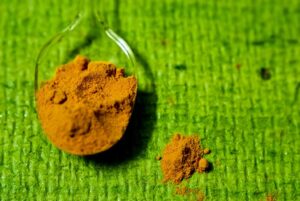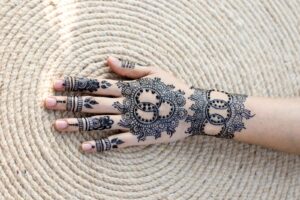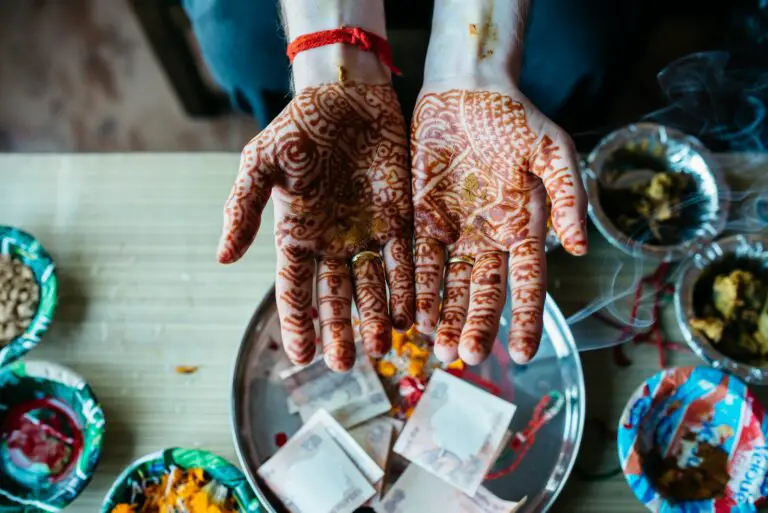In the world of body art and adornment, henna has long held a place of honor. This natural dye has been used for centuries to create intricate, temporary designs on the skin, and it continues to captivate us with its beauty and symbolism. What’s even more fascinating is the role that turmeric plays in enhancing henna body art. In this blog post, we’ll delve into the rich history of henna, explore turmeric’s role in the art of henna, and share insights into creating stunning henna designs with this golden spice.
Henna: A Timeless Tradition

Henna, scientifically known as Lawsonia inermis, is a flowering plant native to the Middle East and North Africa. Its leaves are ground into a fine powder, which, when mixed with a small amount of water, forms a paste that stains the skin or hair.
The tradition of using henna for body decoration can be traced back to ancient Egyptians, who adorned themselves with henna designs, especially during special occasions like weddings and rituals. The art has since spread across continents, adapting and evolving into a myriad of forms.
The Magic of Henna Paste
Before we delve into the role of turmeric, let’s understand the fundamental component of henna art: the henna paste. Henna paste, derived from the powdered leaves of the henna plant, forms the base for all henna designs. When applied to the skin, it dries and leaves behind a deep orange to brown stain. For a long-lasting and vibrant stain, the paste should rest on the skin for a few hours before being washed off.
Introducing Turmeric: A Golden Twist

Now, let’s talk about turmeric. Turmeric, a bright yellow spice, is widely used in cooking, but its application extends beyond the kitchen. When mixed with henna paste, turmeric adds a golden hue to the dye, creating a beautiful, radiant stain. This combination is particularly popular in India, where henna and turmeric come together to celebrate various occasions, especially weddings.
The Process: Mixing Turmeric with Henna
Creating a henna paste with turmeric is a relatively simple process. You’ll need henna powder, turmeric powder, and a small amount of water to form a thick, consistent paste. The key to achieving a vibrant stain is to use high-quality henna and turmeric powders. Mix the two powders with a bit of water until you reach a yogurt-like consistency. Allow the mixture to rest for a few hours, which helps the dye release and deepen in color.
The Benefits of Turmeric-Infused Henna
The addition of turmeric to henna offers several benefits. Firstly, it results in a striking yellow-orange stain, enhancing the overall appearance of henna designs. Additionally, turmeric is known for its antimicrobial properties, which can help protect the skin from infections during the henna application process. This is especially important as the paste is often applied to small areas of the body, like the hands or feet.
Henna Designs: An Expression of Culture

Henna designs are a reflection of the culture and traditions they originate from. In India, intricate henna patterns are often a part of wedding rituals, symbolizing the sacred bond between a bride and groom.
In Middle Eastern cultures, henna is applied to the hands and feet as a form of self-expression, and it’s believed to bring good luck. The rich history and symbolism associated with henna designs make them a wonderful part of various celebrations and ceremonies.
Patterns and Variations
Henna designs come in various patterns and variations, from simple, elegant swirls to complex floral motifs. In Pakistan, the focus is often on bold patterns and geometric shapes, while in nature-inspired designs, the artistry imitates the beauty of the natural world. Patterns and variations can also be influenced by regional differences, with each culture putting its unique spin on henna art.
A Cultural Heritage Passed Down Through Centuries
The use of henna for body decoration has been a cherished tradition for centuries. This art form has been a part of family gatherings, a means of gifting, and a way to connect with the past. As we look at the intricate henna designs on our hands, we are not just celebrating our heritage but also hoping for a future filled with color and joy.
Final Thoughts: Turmeric’s Role in the Art of Henna
In conclusion, henna, with its roots deep in history, is a form of art that transcends time and borders. When combined with turmeric, this art takes on a whole new dimension of color and beauty. The next time you admire a henna design, remember the age-old tradition and the golden spice that enhances its allure.
Experiment with this wonderful combination and suggest it to friends and family as a way to celebrate cultural traditions and rituals with a vibrant, temporary twist. Whether for weddings, special occasions, or simply to express your creativity, turmeric-infused henna designs offer a captivating way to adorn your body and honor the rich traditions of the past.

